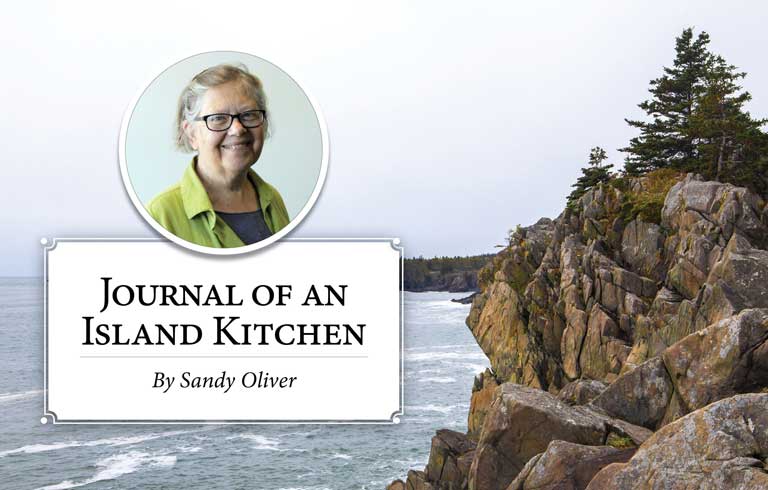When Capt. Emery Bunker, who lived in my home with his wife Adrianna in the last half of the 1800s, renovated the house in 1889, he added a kitchen ell and attached it to the barn. Before he became a master mariner, he learned carpentry from his father Silas, and absorbed all the wisdom of siting houses that our forebears deeply understood.
As the sun trends lower at midwinter, the south kitchen window collects sunshine and warms, and an almost blinding light floods the kitchen midday. Then as the sun shifts seasonally northward more light comes in the opposite window, over the sink, and fills the kitchen with light but less heat. The barn, thank goodness, has a southeastern facing roof.
The house is perfect for solar gain.
Installing a big battery regularly replenished by sunlight solved my back-up power problem.
Despondent about climate change, I read one day about the seeming uselessness of individual action. One writer said, “Do one thing.” If everyone did One Thing—whatever is in their power to do—we could make real progress. That, plus a desire to improve household sustainability, pointed toward solar power.
Decades ago now, a wise old anthroposophist (follower of Rudolf Steiner—look it up, it’s pretty interesting) told me that wood, when burned, released sunshine absorbed by the tree over years of growing. As a metaphor, that works for me so when I stoke my kitchen stove in winter, I imagine sunshine—solar power—released to warm my face and hands by, to fry morning eggs or cook soup. That’s been part of my life for years now, recently joined by 18 solar panels and a Tesla Wall.
Low tech and very high tech. The cook stove’s gas burners, used all the five months when I am not burning wood, serve as a supplemental cooking surface in colder months. I also use an electric oven, a toaster, coffeemaker, food processor, stand and hand mixers, microwave, and stick blender.
Recently we added a fast-heating electric kettle. A fridge and two freezers help me store garden produce, even though many vegetables and fruit are simply cellared. Electricity powers the water pump as well.
Anyone living in Maine, certainly on the islands, is familiar with power outages. Lots of friends and neighbors installed generators lately, most relying on propane or gasoline. In this house, we managed outages nicely over the years, cooking and heating wash water on the woodstove; staying warm with stove fires; and relying on our rain barrels or melted snow for flushing or washing.
In fact, water pump and freezers are my sole points of worry in extended outages. Otherwise, we kind of like it when the power fails, reading, knitting in evening by candlelight or solar flashlight, in a very quiet house free from all the hums and buzzes of our appliances.
Installing a big battery regularly replenished by sunlight solved my back-up power problem. With management (like not baking or drying clothes), we can rely for a couple days of cloudy, stormy weather on stored sunshine. Even with clouds, the barn roof generates modest amounts of energy, enough to keep the lights on and toast bread.
I get to monitor all this on my phone. An app shows me the flow of electricity from the roof to house circuits and to battery storage. I can see when the house draws on the grid, or excess energy from the panels flows back to it. I’ve spent so much time absorbed by watching kilowatts moving around that my household teases me about watching solar porn.
It’s true. So thrilling to see that my battery is up to 98 percent filled and 4.1 kilowatts are distributed to house and battery. I know because I just looked. And it’s only 10:06 in the morning. So far today, I have been 99 percent self-powered. Hah.
I freely admit it’s not cost effective. Entertainment value aside, had I saved the expense of installing my system, I could pay my electric bill for the rest of my natural life which, with luck, is about ten more years, though the system will probably benefit the next generation.
However, filling my kitchen now with sunshine from the barn roof, is the One Thing I could do. So I did it.
Sandy Oliver is a food historian who gardens, cooks, and writes on Islesboro. She can be reached at: SandyOliver47@gmail.com.





